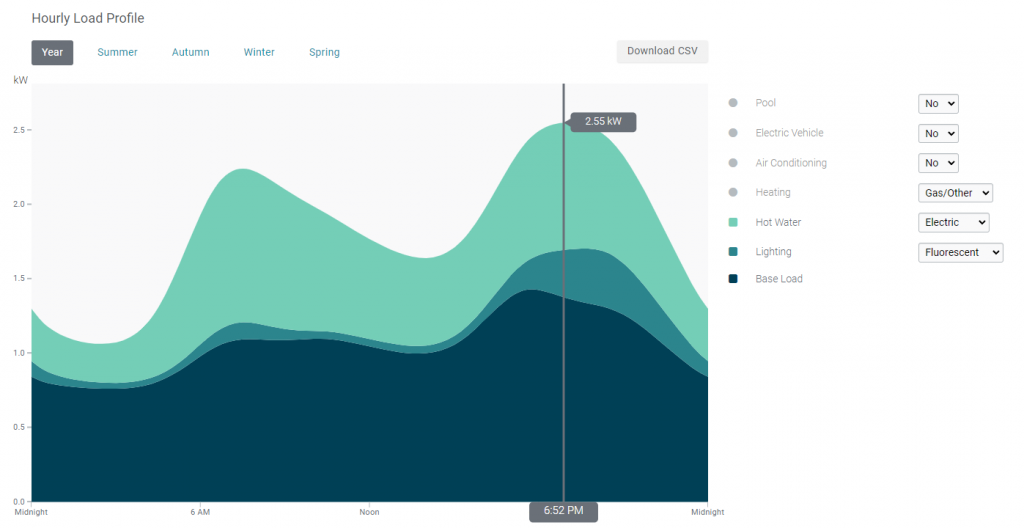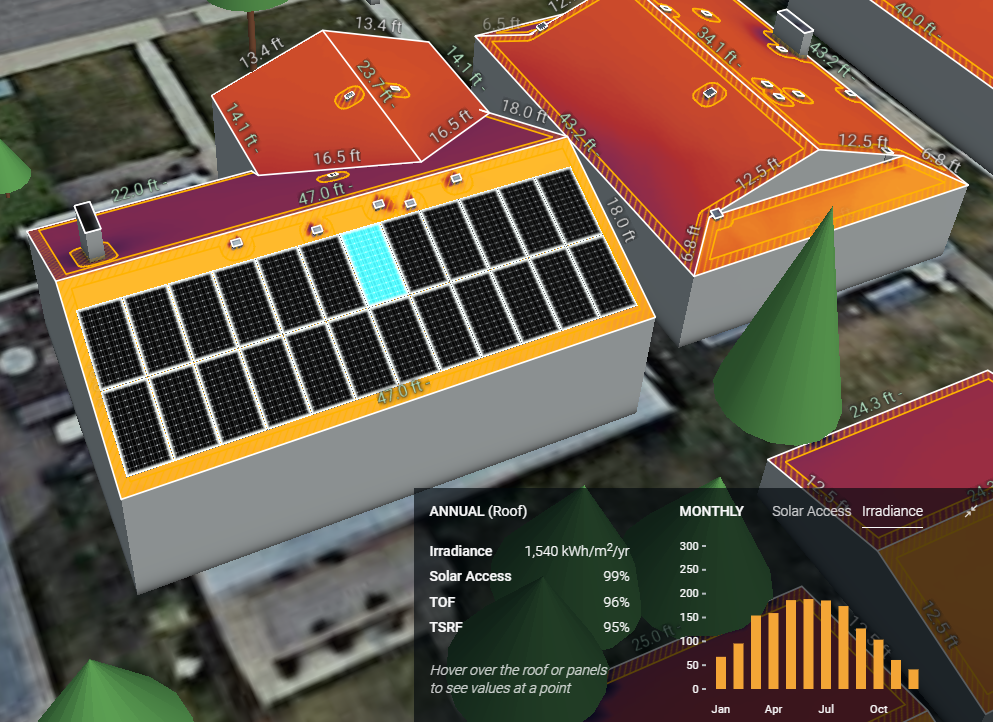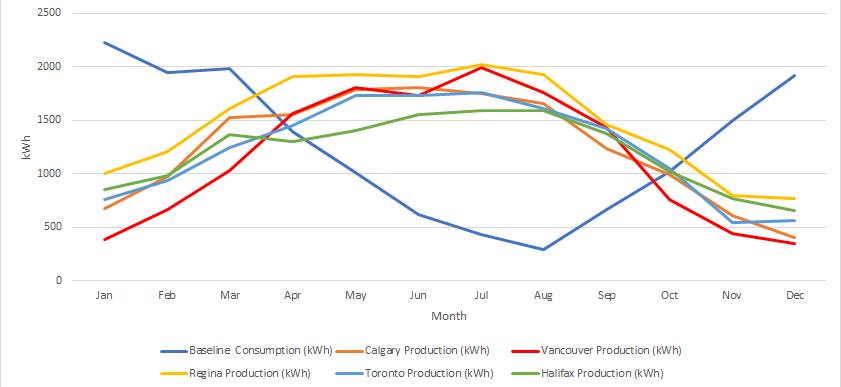Abstract
Amidst Canada’s commitment to the Paris Agreement and the 2030 emission reduction goals, “Mapping Opportunities” critically examines the role of residential solar installations in this national analysis. Structured around the deployment of a standardized 12 kW system comprising 24 Longi Solar LR5-66HPH-500M panels and APsystems DS3-L microinverters, the study compares energy outputs and savings across Calgary, Vancouver, Regina, Toronto, and Halifax.
The project encapsulates a data-centric approach, showcasing how the adoption of such systems can catalyze Canada’s stride towards its ambitious 2030 targets, advocating for a scalable transition to renewable energy within the residential sector.
Introduction
The project embarks on an exploratory venture to gauge the practicality and efficiency of solar energy systems in the residential sector of Canada, focusing on single-family homes with an average footprint of approximately 2000 square feet and a yearly energy usage of 15,000 kWh. It is structured to analyze and contrast the solar capability and performance in five strategically chosen Canadian cities—each with its unique climatic conditions and energy consumption patterns.
By engaging in an in-depth study of governmental initiatives such as the Canada Greener Homes Initiative, along with a suite of pertinent regulations and incentives, the research is poised to offer a critical comparative analysis. This includes juxtaposing the solar energy installations against conventional electricity consumption, weighing variables such as the regional climatic nuances, the prevailing energy infrastructure, and the dynamic spectrum of electricity pricing models across the regions.

Chart 1. Hourly Load Profile of a Canadian Home (Peak kW)
Methods and Materials
The simulations were based on information provided by the Government of Canada, the average Canadian home is about 2000 sqft. In addition, the average yearly energy consumption of the same house is 15,000 kWh which was the baseline for Aurora Solar’s simulations.
Weather data for solar irradiance, solar access, snow, & precipitation levels was gathered at from the closest weather station to each city, using the PEREZ irradiance model and the simulation was at module level using Aurora Solar.
Results
Key findings in terms of energy production, payback periods, maximum irradiance and average monthly savings:
Calgary: A payback period of 6.3 years, annual energy production of 1540 kWh/m²/year, average monthly savings of $292.00.
Vancouver: A longer payback period of 13.7 years, high maximum irradiance at 1420 kWh/m²/year, average monthly savings $113.00.
Regina: A payback period of 10.3 years, maximum irradiance of 1780 kWh/m²/year, average monthly savings of $154.00.
Toronto: Similar to Vancouver with a 13.7-year payback period, maximum irradiance of 1500 kWh/m²/year, average monthly savings of $113.00.
Halifax: A 9.2-year payback period, maximum irradiance of 1450 kWh/m²/year, average monthly savings of $154.00.

Figure 1. Aurora Solar Simulation with Annual Irradiance
Discussion
An essential aspect of this study was the calculation of electric bills for each city, considering varying rate structures such as Time-of-Use (TOU), Ultra-Low Overnight (ULO), or Tiered pricing. This calculation required meticulous data collection and analysis to accurately assess the economic implications of residential solar installations. These challenges highlight the complexity of evaluating solar technology when dealing with varied pricing structures in each jurisdiction.

Chart 2. Baseline Consumption and Monthly Solar Production
Conclusions
A noteworthy observation is that Regina boasts higher irradiance at 1780 kWh/m²/year and a remarkable offset of 118%, while Calgary, with 1540 kWh/m²/year and a full 100% offset, achieves a shorter payback period of 6.3 years due to more favorable net-metering policies, in contrast to Regina’s 10.3 years, impacted by SaskPower’s restrictions.
Contact
Heitor Augusto Dluhosch Schiochet
Email: heitords@student.ubc.ca
Website:https://www.linkedin.com/in/heitor-schiochet